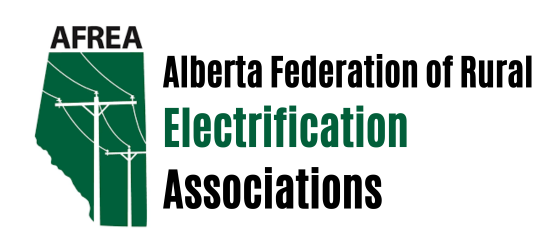
Author: Brandrocket

Newsletter 1

Cooperative Principles

Cooperative Principles
The seven cooperative principles are guidelines by which cooperatives put their values into practice:
First Principle: Voluntary and Open Membership
Cooperatives are voluntary organizations, open to all persons able to use their services and willing to accept the responsibilities of membership, without gender, social, racial, political or religious discrimination.
Second Principle: Democratic Member Control
Cooperatives are democratic organizations controlled by their members, who actively participate in setting their policies and making decisions. Men and women serving as elected representatives are accountable to the membership. In primary cooperatives, members have equal voting rights (one member, one vote) and cooperatives at other levels are organized in a democratic manner.
Third Principle: Member Economic Participation
Members contribute equitably to, and democratically control, the capital of their cooperative. At least part of that capital is usually the common property of the cooperative. Members usually receive limited compensation, if any, on capital subscribed as a condition of membership. Members allocate surpluses for any or all of the following purposes: developing their cooperative, possibly by setting up reserves, part of which at least would be indivisible: benefiting members in proportion to their transactions with the cooperative: and supporting other activities approved by the membership.
Fourth Principle: Autonomy and Independence
Cooperatives are autonomous, self-help organizations controlled by their members. If they enter into agreements with other organizations, including governments, or raise capital from external sources, they do so on terms that ensure democratic control by their members and maintain their cooperative autonomy.
Fifth Principle: Education, Training, and Information
Cooperatives provide education and training for their members, elected representatives, managers and employees so they can contribute effectively to the development of their cooperatives. They inform the general public – particularly young people and opinion leaders about the nature and benefits of cooperation.
Sixth Principle: Cooperation among Cooperatives
Cooperatives serve their members most effectively and strengthen the cooperative movement by working together through local, national, regional, and international structures.
Seventh Principle: Concern for Community
Cooperatives work for the sustainable development of their communities through policies accepted by their members.
(Adopted at the International Cooperative Alliance Congress at Manchester, England on September 23, 1995)
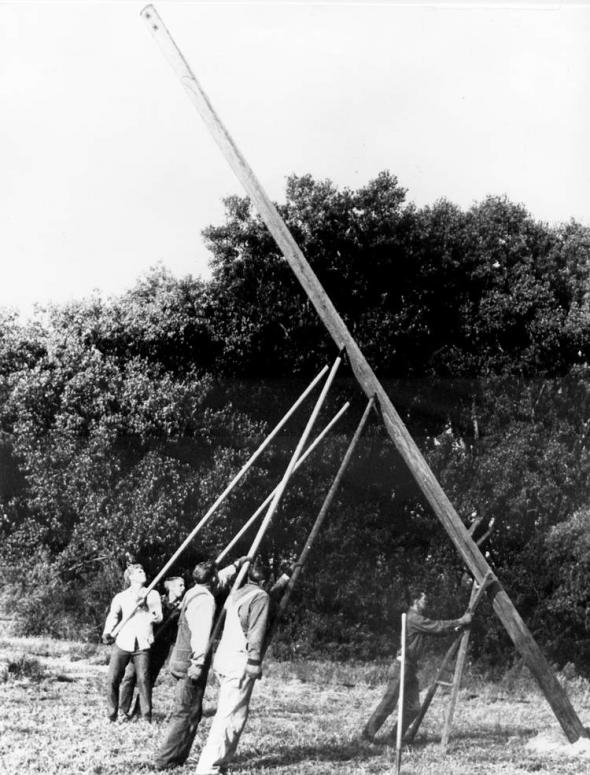
Country Power ~ The Electrical Revolution in Rural Alberta
Electrification forever changed the face of agriculture in Alberta. Sharing the stories keeps the history alive.
This book recounts the history of the people and events that made possible the implementation of rural power in our province. The original book was released in 1993 in Edmonton AB. It shares the story of the Alberta REA cooperative movement from its inception in the late 1940s to the early 1990s.
The 2013 reprint is a new smaller format (5.5 x 8.5) but it includes all the original content, pictures, and historical information. The book is a tribute to the passionate men and women who brought a change to their rural livelihood by bringing electrification to the farmhouse and farmyard.
Sample excerpt from the book:
Through Storms and Childbirth
Anyone who’s ever paid a power bill has made the odd grudging remark about his or her power company. Farmers are known for their dislike of large corporate bodies, so rural electrification gave them the opportunity to complain once a month. But then there was the lineman.
When the company came to call, in the person of the lineman, it might have looked like an old and trusted friend coming to visit. As the men who had physically brought the electric revolution to rural Alberta, linemen were held in the highest regard.
When the crew first arrived to connect the line to the farm, it wasn’t uncommon to see a family member roaming out with a cold drink or a sandwich in appreciation of the linemen’s efforts. Some families even rewarded them with a place at the supper table.
Linemen, also called servicemen, were known to go far out of the way of duty to meet their obligations to the customer. One prime example is that of Tim Fooks, who ventured out into a snowstorm on a service call for Canadian Utilities in December 1955.
The call took him to the Campbell Lake service area. Snow and high winds cut Fooks off from his destination, forcing him to wait out the night at the home of a local farmer, Ralph Strome.
Bad luck for serviceman Fooks was good luck for farmer Strome. Fate had delivered the serviceman to the place he was really needed, for Mrs. Strome went into labour that same evening.Two amateur doctors are apparently better than one: the men saw Mrs. Strome through the delivery of a healthy boy.
The advent of rural electrification meant power company employees were dealing with elements they had never imagined in the towns or cities. For instance, it wasn’t common in urban areas to have power interrupted by an eagle with a 76·inch wingspan swooping to a perch on the line, as happened at Valleyview in1957.
One Calgary Power man remembers the nuisance posed by birds who perched and pecked at insulators, wires or anything metal before the power was switched on. His crew used alive wire to slice the bottoms off glass jugs, then placed the jugs over the top of the insulators to protect them.
The sheer task of getting to a problem to fix it could be demanding, and not only in the worst days of winter. A service call on the Swan Hills transmission line took two Canadian Utilities men through what is possibly the worst terrain of all: muskeg. The Bombardier caterpillar vehicle they had wisely brought along on this May 1960 outing was no match for the soupy ground. It made only limited progress before sinking into the ooze.
Their goal was all of three miles away. Walking, or rather sloshing,through the muck got them there three hours later. Pulling up from every sticky step flared their feet into a mass of blisters.
Along the way, the men stopped to eat their meagre provisions, one hamburger each. Not having a taste for the buns, they pitched them away, then settled down for a nap. It wasn’t long before the men bolted awake, alarmed to see a black bear gobbling down their leftovers. They chased him away, and trudged on to rescue the line, the victim, it turned out, of a fallen tree.
Threats to rural lines came at times from human sources. Calgary Power reported with disgust in the early years that insulators on power poles were favourite sport for target shooters. Shattered equipment demanded a quick fix, since customers had limited patience for power outages.
The role of Mr. Fix-all was one that commanded the most respect among customers. Winter storms had the double curse of wiping out transmission lines, then leaving people without power in cold weather – when they were least anxious to deal with it.
Service crews came into their own in such crises, often producing miracles. The Stettler Independent glowed with praise of the Canadian Utilities repair crews that jumped to the task minutes after a 1965 storm smashed poles and tangled lines: “Just as people were resigning themselves to another bone chilling night in darkness, the blessed lights came on.” The crews, 130 men in total, replaced the 500 or so destroyed poles in biting winds and cold.
Calgary Power had a challenge of its own when a freak snowstorm throttled the area between Cochrane and Strathmore in June 1951.The weight of the ice snapped power poles and tangled wires, knocking out the power for several days.
Luckily, it was a passing phenomenon, and it turned sunny for the repair crews!
(source Country Power ~ The Electrical Revolution in Rural Alberta (c) AFREA 1993, 2013)
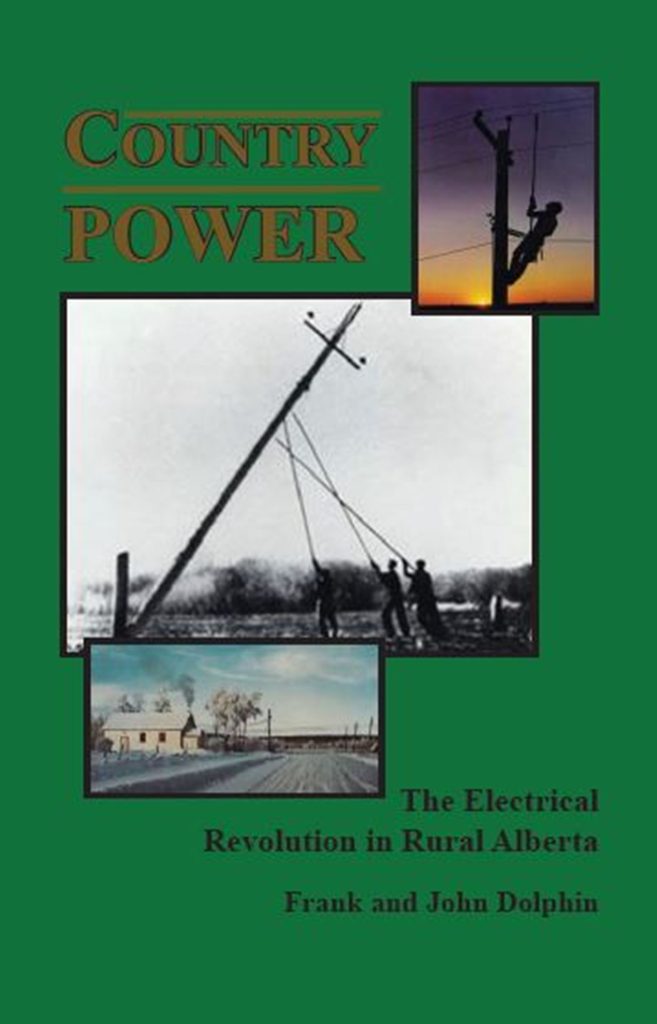
To Order a copy of the book please visit: https://www.smashwords.com/books/view/283963
For Questions on Ordering the Book please email us at:
communications@afrea.ab.ca
TLC for your REA
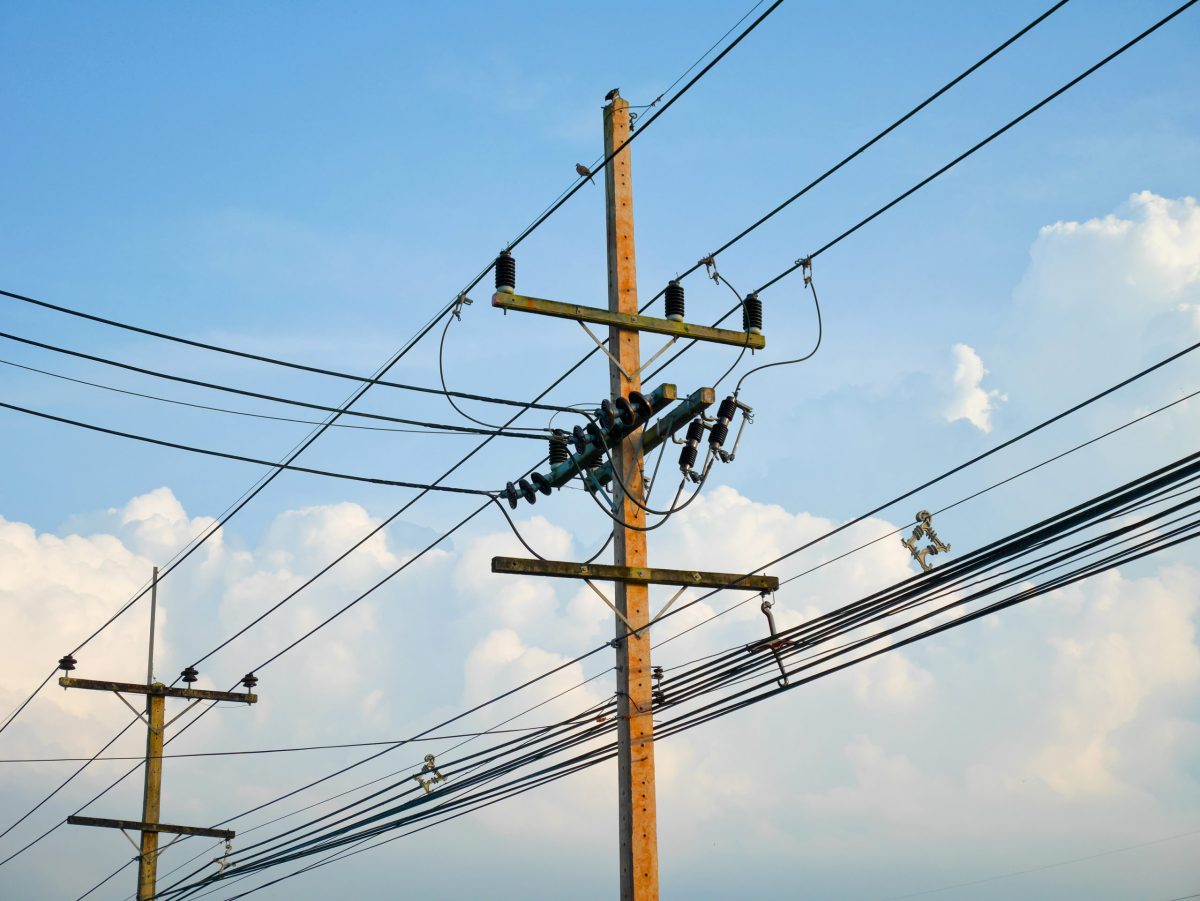
One of the messages the Federation puts on materials distributed to our members is that we are here to support you in sustaining the REA way of life in rural Alberta. It’s a message that tries to get to the heart of why we do what we do. But we print it and read it so many times, it’s easy to stop noticing it.

Social Capital Does Your REA Have Any?
Nothing other than an REA co-op could have brought power to rural Alberta because there was no social or community will within government or the private sector to overcome the cost hurdle. That social will, or social capital still exists today in many rural communities. It shows up in the form of a rural Albertan helping a neighbour plant their crop when sickness gets in the way. It evidences itself in communities that rally around families who have lost loved ones, to ensure things get done on the farm that need to be done. Social capital is present when humans come together to cooperate and support one another in meeting a need.
It’s that simple and that complicated.
REAs started with lots of social capital but over time some have lost touch with how to maintain and build it. Others have failed to pass the principles of social capital on to the next generation. This isn’t unique to REAs. Studies in the cooperative sector show co-ops, like any other organization, have a life-cycle. It is normal for co-ops to go through periods of waning social capital.
The big question is what are you going to do about it?
Maybe it is time to get a read on your REA’s social capital and then take action. You may need to perform emergency resuscitation, or you may just need to apply some TLC. Whatever the level of response, one thing is certain – your REA co-op will not survive and thrive without a strong dose of social capital at work and in action.
It is common to experience lots of cooperation and participation by your members when a co-op is new and then to see that level drop and complacency set in. The health of an REA, like any co-op, is tied to the member community and the level of trust and participation in the organization. Coming together to fill a community need fuels social capital. But then what do you do? After sixty or seventy years of mundane existence, social capital can disappear.
The Secret of Social Capital
What is the secret to building and maintaining social capital for the long haul? The secret is to develop and constantly earn from our members the same trust and social will to get involved that the REA had when it first started. It is the trust between people to take risks together as a community for the good of the community. It is the confidence in the membership that elected Boards are acting in good faith for the good of the whole. It is trust in the co-op itself as a mechanism that benefits the community. When people trust how the co-op is being run and show up to help, the future becomes far more inviting and exciting. People reciprocate. They share. This whole bundle of goods is ‘social capital.’ It’s nothing less than all of us cooperating with one another to meet the needs of our community.
Has your REA maintained and grown its social capital or is it time for some TLC?

REA SUCCESS STORIES
We all know that amalgamation is defined as the process of combining two or more entities into one large conglomerate. We also know that there is strength in numbers and working as one. Proof of this is declared in the cooperative principles that are the basic premise of the co-op business model. It is not just financial – it is the social and environmental aspects of cooperatives that make the model acceptable and viable. Throughout history there are many examples of amalgamations – also known as mergers in the business world – that combine smaller units into larger controlling and often highly successful composites. In Alberta, one such example of higher numbers of amalgamation can be traced to our own rural electrification associations (REAs). Although the number of REAs appeared to have declined over the years, much of that calculation was based on the reorganization of many smaller REAs joining forces into larger groups. The tried and true “working together” drives an advantageous amalgamation and promotes sustainability for those REAs seeking growth and longevity.
In 2020, we recognize that there are five such entities province-wide celebrating 20 years of operating successfully as Self-Operating REAs whose original vision was to promote and keep the REA entity alive. Our self-operating members – Battle River, North Parkland, and Blue Mountain are evidence that a larger composition of smaller REAs can truly make a difference. Representing 8,500, 2,600, and 3,600, respectively, these three self-operating REAs make up 63% of the AFREA membership and 35% of the total REAs in the province of Alberta. They are a testament to the tenacity of grassroot cooperatives.
BUSINESS RESPONSIBILITIES
Smaller REAs can find the business of running the co-op to be overwhelming especially if they are not set up with management or staff to field administrative duties. Ongoing monthly tasks keep a secretary busy and, as the list of REA responsibilities grows, so does the time investment for a volunteer. Board of Directors are therefore responsible not only for the business decisions of the association, but also the actioning of those processes and motions. It can become too much when an REA business is not even your first focus or responsibility. REA directors are farmers and with that comes a full day of responsibilities having nothing to do with the business of keeping the REA lights on.
Defined as essential services in Alberta, REA business functions cannot be put aside for another day or time. Running the business is not just about attending a monthly meeting or answering a few emails or phone inquiries. As a participant in a dynamic industry, REA secretaries and boards are constantly impacted by increased reporting, administration, and other organizational duties. They must be available or accessible 24-7, 365 days a year. What often ends up happening is overwhelming frustration and resentment toward those duties for which they are liable and accountable. Rarely do they receive compensation for the performance of these duties. Even the boards of the operating REAs that contract to Fortis or ATCO for operational functions are still responsible and accountable for the business of their REA.
A CASE FOR AMALGAMATION
This increasing demand on time and resources is one positive argument for amalgamation. The ability to delegate duties to a manager who oversees several REAs or is employed by a larger self-operating REA is a definite asset to a board that can now focus on policy and high-level decision-making. The benefit of economies of scale come into play with purchasing power, decision-making, and resource allocation.
Although a single REA may lose its autonomy, amalgamation provides a viable alternative to selling and losing the REA altogether. Sales are final. Members lose a valuable rural asset. Amalgamation helps preserve the REA history by providing an option to continue in an economical and efficient larger unit. REAs are a member of a greater cooperative movement across Canada that values local ownership by keeping money within rural economies. The advantage of having the REA continue even as a larger amalgamated unit is that the board self-regulates the REA thereby setting their own rates and tariffs. Selling the REA takes away that independence and, even more disconcerting, it puts the profits into the pockets of shareholders instead of your own community.
CONGRATULATIONS
Amalgamation is a viable option for our associations that face the threat of being squeezed out of an industry that caters to growth and an ever-increasing management load. The AFREA would like to recognize and thank those REAs who have made history by encompassing smaller fellow REAs to make a bigger and better viable unit. We commend their “working together” attitude and cooperative spirt.
Congratulations! We continue to look forward to representing a successful membership of sustainable rural distribution power co-ops any size or status.
Climate Change
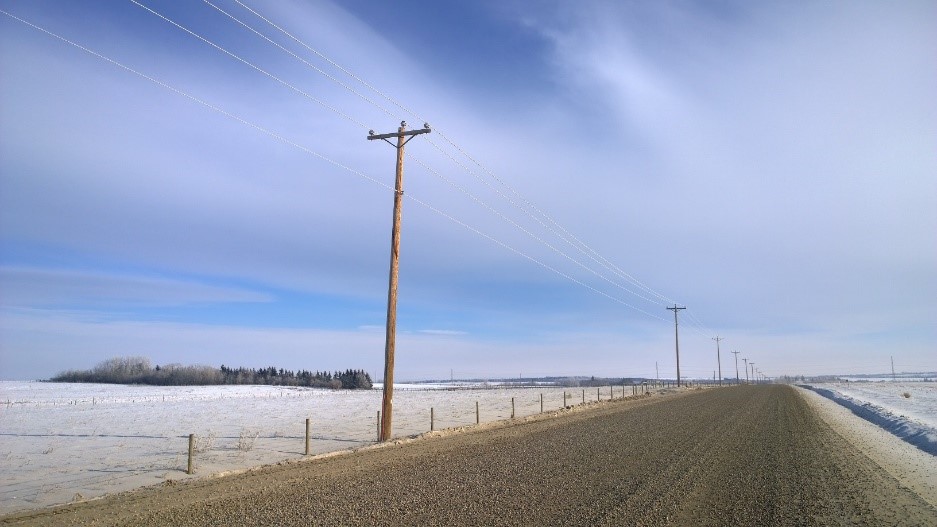
When studying climate change, scientists draw their evidence from many sources. However, it is widely accepted that green house gases are causing changes to our climate.
Climate Change Position – Discussion Principles
We, as a collective, are working toward a sustainable future for all REAs in the province with options that allow for growth and prosperity. We do not operate in isolation – Rural Electrification Associations (REAs) are an integral part of a dynamic industry governed by overriding economic principles for the fair, efficient & affordable provision of electricity. The Alberta strategy on climate change challenges the foundation of our distribution system with the elimination of coal-fired generators by 2030. Because we are part of the bigger picture in Alberta, it is imperative that we devise and implement a long term strategy to ensure REAs make the transition to this inevitable industry transformation.
In much the same manner as Smart Grid, Climate Change is taking the planet by storm, in a manner of speaking. Our Federal and Provincial governments are on board with plans that will introduce sweeping changes destined to clean up our national and provincial environments. Reducing our carbon foot print and employing renewable resources are two of the methods to implement this change. Although it’s a world-wide phenomenon – Alberta is delayed in its implementation of some kind of Climate Change strategy, employing components of the Federal plan and accelerating some to introduce a more aggressive timeline. Challenging Climate Change is based on making smarter energy choices by reducing the production of harmful environmental by-products. Replacing coal-fired generation is foremost in the Alberta plan with a 2030 deadline for taking the final plants off line. But how does Climate Change affect the industry, as a whole? How does this sweeping initiative affect rural power utilities who bank on coal fired generators to supply their power? What changes have to be made in order for the rural power utility to fit into the Plan? How does the Climate Change Plan effect rural communities, in general – especially with revitalization of rural communities a focus needed to ensure their longevity? Does the Business Case provide strategy and support for those who are dependent upon rural economic diversity and development? What long term consequences are likely to affect consumers and electricity pricing over the course of this transition and beyond?
As a part of this planet, our general statement would be that we care about the effects of modernization on our climate, the decimation of natural resources, and the degradation of what will be left for future generations. A Google search for “climate change” will bring up a myriad of positions, plans, articles and arguments, agreements and disagreements as to what Climate Change is and even whether or not it actually exists. Regardless of your own stand on Climate Change, it is hard to argue the need for conservation in order to respect and preserve what natural environment we do have. Reduction of valuable rainforests, urbanization, and increased industry emissions from a society highly dependent upon technology factor into the change in climate patterns. Where you get your information will be irrelevant – as long as it is reputable – because Climate Change is a global issue, much like anything to do with technology, growth and advancement, and preservation of our planet.
Our position does not question the need to implement preservation plans, but questions if enough study has gone into the effects this will have on all areas of the utility market. If Alberta rushes in to implement their Climate Change Plan just to keep up with global applications, are we sacrificing a well-researched and executed plan just to implement something? We are not leaders in this initiative – is there a reason to roll it out in haste?
What is Climate Change?
The cut and dried version of Climate Change is defined as the “long term change in the earth’s climate, especially due to an increase in the average atmospheric temperature.”[i] However, there are many variables to consider in this process, including the fact that Climate Change is projected to change both average conditions and extreme weather events.[ii] First, although the term “climate change” is fairly new with an early 1980’s origin, the process itself is ages old being a natural process the Earth went through long before human activity affected its intensity. Factors such as the Earth’s orbit, intensity of the sun, volcanic activity, etc. catered to changes occurring naturally as the Earth progressed through periods of ice ages and warming trends. The greenhouse gas effect, whereby the Earth retains heat, is intensified with the burning of fossil fuels (coal, oil, natural gas). The main cause of drastic changes during the last half of the 20th century has refocused on human activity.
The climate is changing and globally we are experiencing impacts[iii], such as:
- Increasing temperatures
- Rising ocean levels
- More frequent droughts, floods, and forest fires
- More extreme weather, which creates greater societal challenges
The Earth’s climate is affected by the following human and natural factors that are external to the climate system.
- Natural Factors
- Changes in ocean currents
- Changes in solar radiation
- Natural activity, such as volcanic activity
- Human Factors
- Depleting ozone layer through use of chemicals like Chlorofluorocarbons (CFCs)
- Increases in concentrations of greenhouse gases, primarily from burning fossil fuels, which trap heat within our atmosphere
- Using forests and wetlands for agricultural, residential and industrial uses
- Carbon dioxide (CO2)
- Methane (CH4)
- Nitrous oxide (N2O)
Each of these compounds has an important effect on the earth’s temperature by trapping heat in the atmosphere and causing global temperatures to increase. While this natural greenhouse effect makes life on Earth possible, an excess of greenhouse gases in the atmosphere could dramatically change our ecosystem. A majority of scientists now agree that human activity is responsible for most temperature increases over the past 250 years. Humans have substantially increased the amount of greenhouse gases in the atmosphere by burning fossil fuels, including:
- Coal
- Natural gas
- Oil
The biggest concern is the speed at which the growth of greenhouse gas emissions in the atmosphere is occurring.
The Government Strategy
Alberta: (note: this may change with the new party in office – will be updated)
Alberta is developing a new strategy on climate change based on recommendations put forward by the Climate Change Advisory Panel, published in their report Climate Leadership – Report to Minister November 2015. Details of the final strategy are being developed, but there are 4 key areas that the Alberta government is moving forward on:
- Phasing out emissions from coal-generated electricity and developing more renewable energy
- Implementing a new carbon price on greenhouse gas emissions
- A legislated oil sands emission limit
- Employing a new methane emission reduction plan[iv]
Alberta’s response to climate change will determine our province’s future. As a jurisdiction rich in fossil fuels, and where the energy sector plays such a large role in our economy, the implications of climate policies – be they provincial, national or international – are significant. They will impact employment, future economic growth and stability, the government’s ability to pay for social services, and Albertans’ prosperity, opportunities, and health. Meeting global climate change goals means decreasing the use of coal and oil, and increasing use of natural gas and renewable energy. It means market demand will rise for low- and no-carbon energy sources and fall for high-cost and emissions-intensive resources. Technologies capable of separating economic growth from energy use and energy production from carbon emissions will prosper. This is the future for which Alberta must prepare.
Canada:
Facts on Climate Change: Climate change refers to a long-term shift in weather conditions. It is measured by changes in a variety of climate indicators (e.g. temperature, precipitation, wind) including both changes in average and extreme conditions. Climate change can be the result of natural processes and/or human activity.[v]

Climate Change – AFREA Perspective
Evaluation of plans that address Climate Change must encompass general applications and specific business strategies especially because a plan such as this will have long lasting effects on future generations. In principal, the AFREA agrees with the need to ensure adequate legislation is in place and there is clearly identified and enforced penalties with regard to environmental disasters and dangerous emission levels. But in order to ensure that the Plan will work there are several questions that must first be answered. Does the analysis of timing, cost benefits, economics, and technology ensure they are in sync with Alberta’s electric system? How does the replacement of a plentiful resource with alternate sources contribute to demand on the grid? What will be the cost passed on to Alberta power consumers? Now and in the future? The transformation to alternative energy will require new investment and commitment by the Government and its many stakeholders. These stakeholders expect significant value in return. Understanding how this value will be created is an important step in defining the vision. Expectations are high and our support of such a plan can only be realized with thorough consideration to each of the areas described below:
- Agree with the concept of preserving the planet for future generations – this basic concept supports any plan that considers the drain on natural resources and implementation of systems that are based on future estimations.
- Science has provided detail and data to support the deterioration and proposed outcomes – there are those who argue the reality of Climate Change even going so far as to claim it is a hoax. Scientific support, however, cannot be argued as false as we experience some of the proposed outcomes with regard to changes in weather and other natural patterns.
- Societal Impacts and our standard of living – no matter how far we advance, and perhaps because of how far we advance, there is an expectation as to the level standards we, as a society, are willing to accept. Plans that impact society as a whole must consider the consequences of implementation.
- Safe Reliable Cost effective electric system – there is no deviation from the basic economic right as consumers – we still expect a safe reliable cost effective electric system, no matter how it is delivered. In the Alberta market place, those expectations have always been high on the industry standard list. If change by the Climate Change Plan triggers the need for new transmission projects to accommodate the load and continue to give Albertan’s a “safe, reliable, and cost effective” system, are cost management structures in place before any new projects are implemented?
- Electricity as a critical commodity in our social and business environments – it’s one of those expectations we have become accustomed to – flip the switch and the power comes on. Our dependency on power has made it a critical commodity in our home and work life, and all the measures in between.
- Global, Federal, Provincial & Local Economics must be included in the decisions – as we have stated, we do not operate in isolation from the Alberta industry; so, too, with the Alberta industry in relation to the rest of the world. Our immediate economics are driven by our success and involvement in the local market AND the global market.
- Technology and economics must converge to provide an efficient outcome – we cannot expect success of any plan without the support of systems and resources. Technology must keep abreast of the electric requirements to have an efficient cost effective way to o implement new systems and then maintain their growth over time. With regard to generation, it would be prudent to use existing transmission system facilities before considering building new generators. Replacing coal generators and eliminating emissions is foremost in the Climate Change Plan, but early retirement??
- Long term life cycle analysis on systems and process is required – this is not a one-time thing… there has to be a way to ensure longevity through analysis and review on an ongoing basis. There are going to be many evolutions as there have already been in the industry over the past few decades. Power poles have a lifecycle of 50 years with pole testing done on rotation intervals; solar panels are estimated to last 25 years with diminishing capacity after that – what are the lifecycle vs replacement costs of all replacement renewables capital investments and how are costs recouped – do they get passed on to the consumer?;
- Must be Cost effective today and for future generations – goes without much argument that consumers look at their costs and there is no reason to believe that this won’t be something of concern in the future, too – unless it becomes a luxury. As a critical commodity, electricity must be affordable for everyone so we have a wholly functioning society.
- Funding must be provided under good business protocol– fair and equitable consideration and distribution of funding must be available to each level of participation in order to have an industry that operates in unison to provide “a fair and efficient electric system.”
- Feasibility Studies and Business cases must be used to provide the analysis for each project – only with proper review can each project be evaluated on its merits to the plan, as a whole. If a project does not measure up to standards set by studies or arguments met under cost/value comparatives, its value to the whole plan must be reconsidered. The Business Case on each of the suggested projects should include criteria for a localized procurement process and a reclamation bond in order to utilize capital investments already in place (wind generation, updated generating plants, etc.) thereby minimizing the cost passed on to the consumer. It is imperative that installations already in place are used to full potential to maximize efficiency.
- Clearly identify the Risks and Rewards – risk analysis must provide specific details of expected outcomes as well as identify the cost and reward of implementation under each project with application to all levels of the industry participation.
- Government funding would be initiated for startup only and the ongoing costs would be included in the business practices – ongoing funding should not be part of the long term plan to convert to Climate Change Plan protocols. There should be initial funding available due to the cost of introducing compliance to new regulations; however, ongoing costs need to be calculated into the business plan of each industry participant. How does this impact the privatized industry? What costs are passed along to the consumer?
- Consumer cost for the electricity commodity short and long term – consumers pay for upgrades to the transmission system now – how much and for how long will consumers be on the hook for cost recovery of Climate Change Plan conversions? How is the cost going to be recaptured by those who are beholding to shareholders? What regulations will be in place to protect consumers? How long and how much will consumers pay for Climate Change, if they should, at all?
Climate Change Objectives – Summary:
As with many initiatives introduced for the benefit of the greater good, responsible organizations would do well to find ways to embrace changes that are inevitable. As one component operating within the bigger power picture in Alberta, REAs have a vested interest in what happens within that industry. If the goal is to be sustainable into the future, our argument for a better world for generations to come, supports the Climate Change Plan, in principal. Our argument for caution lies in the identification of true costs to implement new protocols especially in our role as small consumer power cooperatives. REAs wholly support the provision of a fair, reliable, and efficient electric system in Alberta and adapt to those initiatives that contribute to building a strong rural community. REAs continue to hold the position of benchmark within the industry in rural Alberta operating on a not-for-profit basis. Working with the government to ensure our future generations have the same access to “fair, reliable, and economical” power systems is forefront in our strategic planning and sustainability.
References:
[i] Dictionary Definition of Climate Change – http://www.dictionary.com/browse/climate-change
[ii]Facts on Climate Change – Government of Canada – http://www.climatechange.gc.ca/default.asp?lang=En&n=F2DB1FBE-1
[iii](Source: Alberta Government / Climate Leadership)
[iv]Alberta Climate Leadership Plan – http://www.alberta.ca/climate-leadership-plan.aspx
[v]Ibid. Facts on Climate Change – Government of Canada

TRANSMISSION in Alberta
An AFREA Perspective
Transmission upgrades are required in order to meet the growing needs of a dynamic province – not only to address today’s consumer expectations but also to prepare for tomorrow’s demands.
The introduction of The Electric Statutes Amendment Act[i] – formerly Bill 50 – and its subsequent approval during the 2009 fall sitting of the Legislature brought to the forefront another component of the Alberta Energy Strategy – the necessity to upgrade and expand the transmission infrastructure. The Amendment gave green light powers to the Government to declare which upgrades would be classified as “critical” and would follow a process similar to declaring critical need with regard to other public systems, such as highways, schools, and hospitals. The responsibility for determining “critical” status would be left to the Government to declare which projects are necessary and in the best interests of the province, as a whole.
A proclamation such as this draws interest in varying degrees including those who fail to recognize the overall necessity of control in decision making, the need for the amendments, or even why upgrades are required on the provincial transmission system. Sometimes those who choose to hone in on specifics do so in relation to their own wellbeing or that of their immediate community, instead of looking at the big picture. It was not as easy as claiming “I support Bill 50” or “I am opposed to Bill 50” as there were many factors to consider in making such a decision and it was dependent upon other components relative to that decision. The fact is, upgrades to Alberta transmission structures have not been performed in over twenty years, with the exception of one significant upgrade[ii] and is required not only to meet Alberta power consumer’s expectations now, but to also provide enough energy supplies to meet the growing demand on the transmission system in the province.
AltaLink, Alberta’s transmission leader claims that “in some circumstances, future transmission development will save customers more than the costs of development through increased efficiency on the province-wide grid. Transmission improvement may go well beyond grid efficiency savings, providing Albertans with substantial generation savings.”[iii] Whether there are immediate savings or a cost reduction over time, the consumer looks at the costs in relation to the service they receive – sometimes the basic expectation of power when we flip the switch is elementary yet overlooked in the grand scheme of things.
Identification of Critical Transmission
The Government, under amendments to this Act, accepts the responsibility of decision making for all Albertans in determining where and when critical transmission is required. “Someone needs to make this decision who better than our provincial government.[iv]” In a government document released in 2009, the government set forth a nine step outline that showed what areas were to be affected by the amendments and, despite the much argued changes, seven of the nine steps remained the same. The amendments allowed the Government of Alberta to approve four critical transmission infrastructure projects whereby overriding the Alberta Electric System Operator’s (AESO) “needs” application to the Alberta Utilities Commission (AUC). It also made provisions that will allow projects to be assigned through a competitive process instead of leaving that assignment to the sole responsibility of the AESO.[v]
Bill 50 identified four critical transmission infrastructure projects:
- Two new high-voltage direct current lines between Edmonton and Calgary that will carry more power to Alberta consumers in central and southern Alberta.
- One new alternating current line between Edmonton and the Heartland area to carry power to industrial consumers like Alberta upgrading facilities.
- Two new alternating current lines between Edmonton to Fort McMurray to carry power from co-generation plants to Alberta consumers.
- A substation in Calgary to provide more reliable service to customers in south Calgary.
Each of the proposed transmission upgrades services a specific sector of the province of Alberta but will directly and indirectly affect each and every Albertan using power. Viable infrastructure is comparable to having highways that efficiently and effectively move traffic – if we view the transmission system as a network of roads[vi] that transports our power supplies to the end user, we can easily grasp the fact that without construction upgrades, increasing supplies that flow through an insufficient and inefficient system is comparable to maneuvering rush hour traffic in grid lock.
The AFREA maintains that upgrading the aging transmission infrastructure is an important aspect of the Provincial Energy Strategy – looking ahead at sustainability means providing sufficient systems for today, without compromising future requirements – and this means improving the way we provide our power supplies in response to an ever increasing demand.
Competition and Transmission
Efficient transmission infrastructure does not only mean an efficient transport system for internal use – it also means a system capable of handling the increasing supply and demand of importing and exporting electricity. An increased capacity allows free movement of electricity and prevents losses due to generation. A capable transmission can increase the flow of electricity and by increasing the supply we may see the lower costs that are the result of a competitive market. Martin Merritt with the MSA claims “…we need more transmission capacity because that – not subsidized generators – is the best way to assure the competitive market that Albertans have come to expect.”[vii] The wasted cost in fixing an ailing system is not as cost-effective as investing in a system that will meet future estimated demand.
Heartland Transmission Project[viii]
There has been particular interest in this project especially from residents of Sherwood Park, Strathcona County, in that the preferred route of construction runs along the Transportation Utility Corridor put in place sometime ago for just this purpose. This Corridor runs north and south along the western edge of Sherwood Park, just east of the refineries along secondary highway 216. The concern raised by various groups including members of the hamlet’s County Council, is that proposed construction along this corridor raises issues including the health aspects of transmission in close proximity to populated areas and to a lesser degree, the aesthetic values and their affect on reducing property values.
A feasibility study[ix] by Stantec was commissioned by the Government of Alberta Department of Energy in 2009. The focus of the study included current and future transmission technologies including underground lines. There were no recommendations drawn by Stantec in the study completed in February 2010, as they merely reported on the findings and conclusions with regard to implementing the various technologies.
“Power can also be transmitted underground, although only a small fraction of high voltage transmission has been constructed in this fashion to date. Underground transmission power cables are insulated with a medium (oil, paper, polymers or even compressed gas) and set in a duct, tunnel, or thermal backfill material. High-voltage overhead transmission is much less expensive to build and much quicker to repair than underground transmission, but it requires wider “right-of-ways.” A right-of-way is the strip of land needed to locate, build, operate and maintain a transmission line or cable. There is also the question of environmental impact. High voltage underground transmission is not without its environmental impact, but it has seen increasing application in densely populated urban and commercial areas where there is limited right-of-way. Public concerns have also been expressed regarding radio interference, audible noise, corrosion effects, electric fields and electromagnetic fields associated with high-voltage overhead lines. (excerpt from study, Stantec, 2010)”
In the results of a survey completed by Leger Marketing for RETA (Responsible Electricity Transmission for Albertans[x]) in October of 2009 (published November 2, 2009), proponents of underground lines were in favour of this technology option despite the cost of doing so – many respondents indicated they would be willing to pay inevitable increases in power to have the proposed lines underground. The random sampling showed that 68% would pay `something` on their power bills to have the power lines buried and were prepared to pay a little more if they were in close proximity to their own home or child`s school. It is not certain by these results if residents would be willing to contribute to the complete cost of the option. As outlined in the Stantec study, above ground transmission standard designs are the norm across North America with few undergrounds applications. There is still a need to determine whether underground lines are appropriate in the Alberta climate.
THE AFREA Position on Transmission
As previously stated here, and in our letters to the Alberta Government and the Alberta Utilities Commission, the AFREA supports the upgrade and construction of a transmission infrastructure that will not only provide an efficient reliable utility network for consumption today but also a system that will support a growing province and an increasing demand for more electricity in the future. We are also of the opinion that fair and equitable compensation is a must for those who provide their land for the necessary right-of-way access. The standard above ground transmission tower design is appropriate technology for most of North America and we feel that this is also appropriate for Alberta`s system. It would be our recommendation that if other options are required in areas where concerns have been raised, such as in the Heartland Transmission Project, then the AFREA feels that the cost of the specialized infrastructure should be the responsibility of the requesting party. To provide otherwise, sets dangerous precedent as we move forward in other areas – in the end it should be the power consumers in affected area that see the effect of this request on their tax or power bills, not all Albertans.
Transmission in Alberta – An AFREA Perspective 2010 (c) AFREA – no reproduction in whole or in part without the express written permission of the AFREA.
CLICK HERE FOR “AESO Long Term Transmission Plan” (directs you to AESO web site and PDF file)
References:
[i] https://kings-printer.a]lberta.ca/570.cfm?frm_isbn=9780779846269&search_by=link Transmission Regulation made under the Electric Utilities Act, which sets out the details of the Independent System Operator’s duties and obligations regarding transmission, including consultation requirements, requirements for transmission system planning and forecasting, and reliability standards.
(prior link reference: Bill 50 – ELECTRIC STATUTES AMENDMENT ACT, 2009: Chapter 44 (Assented to November 26, 2009)
[ii] https://www.altalink.ca/ AltaLink web site
[iii] https://www.altalink.ca/ AltaLink web site
[iv] Quoted from a recent letter to the Government of Alberta, regarding transmission; AFREA 2009.
[v] https://www.altalink.ca/“Getting Transmission Built” Government of Alberta, Energy
[vi] Keeping Electricity Competition by Martin Merritt, Market Surveillance Administrator (MSA) – document referenced is no longer at the old link. Referenced in report – Monitoring the Electricity Industry in a Changing Market
[vii] Keeping Electricity Competition by Martin Merritt, Market Surveillance Administrator (MSA) – document referenced is no longer at the old link. Referenced in report – Monitoring the Electricity Industry in a Changing Market
[viii] Old link no longer is valid. The link provided supports the information referred to in an article on November 1, 2011 – Alberta Utilities Commission approves Heartland Transmission Project Information provided by EPCOR and AltaLink
Prior link no longer worked for copy of study available from Government of Alberta web site.
Dedication: Herman Schwenk

Coronation Cemetary Dedication
Herman Schwenk
(b. March 1, 1931 – d. January 30, 2021)

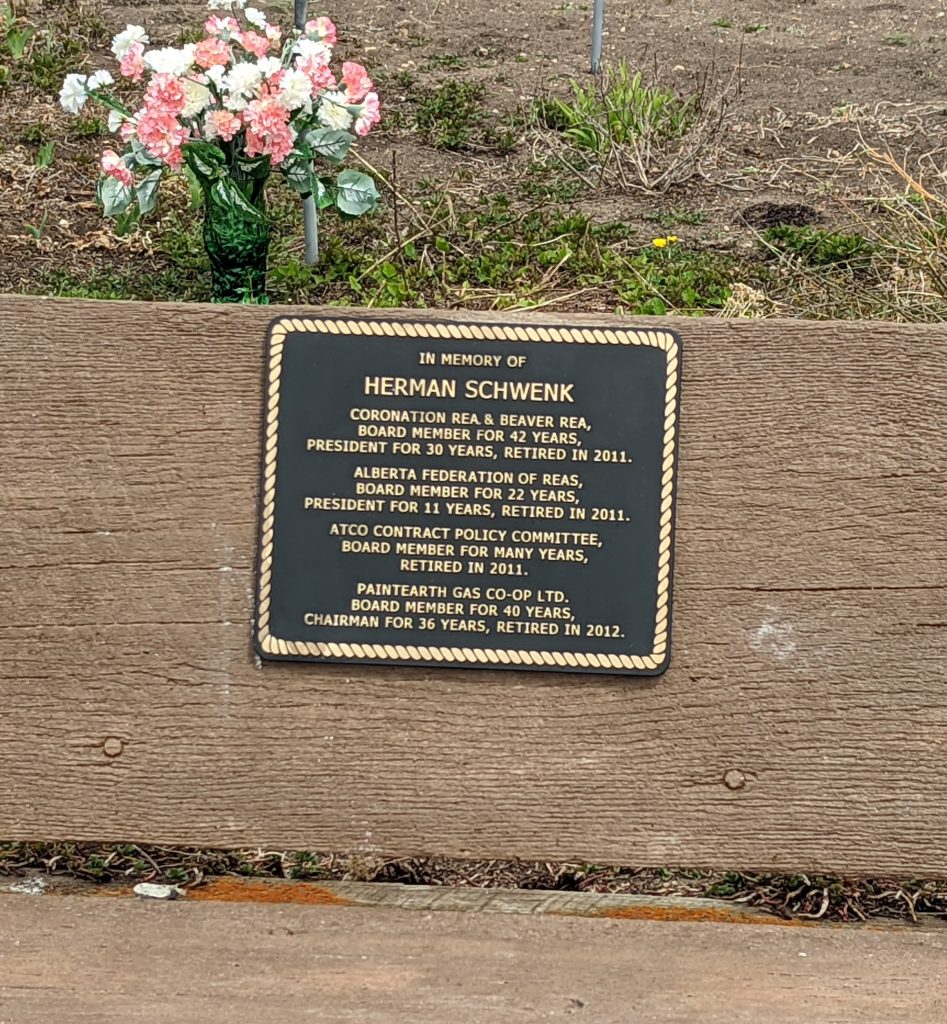
The AFREA, Beaver REA, and Paint Earth Gas Co-op sponsored the dedication of the bench and plaque in recognition of Herman Schwenk and his years of service to rural Alberta associations. Herman’s outspoken support of rural issues as president and/or board director will be remembered always.
